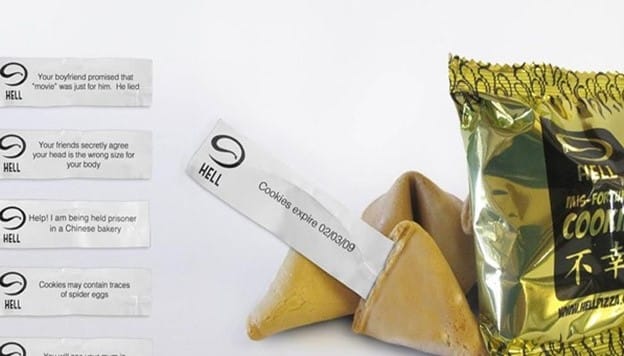Business News Daily provides resources, advice and product reviews to drive business growth. Our mission is to equip business owners with the knowledge and confidence to make informed decisions. As part of that, we recommend products and services for their success.
We collaborate with business-to-business vendors, connecting them with potential buyers. In some cases, we earn commissions when sales are made through our referrals. These financial relationships support our content but do not dictate our recommendations. Our editorial team independently evaluates products based on thousands of hours of research. We are committed to providing trustworthy advice for businesses. Learn more about our full process and see who our partners are here.
Direct Mail Marketing Guide for Small Businesses
Direct mail might be less common nowadays, but it's still a highly effective way to reach customers outside of digital marketing.

Table of Contents
Today’s marketing channels are primarily digital, with email marketing and social media marketing growing in popularity because of their ease, reach and low cost. However, physical advertising can have a significant positive impact on your customers and bottom line.
Integrating direct mail marketing with your other marketing channels can provide your customers with a unique, personalized experience that helps your business stand out from the crowd. We’ll explore direct mail for business and share how you can create a successful, impactful direct mail campaign.
What is direct mail marketing?
Direct mail marketing is any physical correspondence you send to customers via mail to gain their business. If you’re sending mail to customers, you should include the following details:
- Something that identifies your business (like a logo or business name)
- A call to action (CTA)
- A way for customers to contact you (e.g., phone number, email address, website)
Is direct mail marketing still useful?
While it may seem that the entire world has gone digital, traditional mail still has a solid place in marketing. According to a 2020 MarketingCharts survey, direct mail can increase your return on investment (ROI) when combined with other marketing channels. Among survey respondents, 59% said that adding direct mail into a multichannel approach resulted in a good ROI. Another 7% said their ROI was very good.
The same was also true of target customer response rates. Among survey respondents, 69% said that adding direct mail resulted in a good response rate. Another 8% said their response rate was very good with direct mail marketing in the mix.
The direct mail marketing service Jet Mail has also reported that its customers continue to see high engagement rates. In its 2021 analysis of the direct mail marketing space, Jet Mail noted that some campaigns involving 2,500 mailers yielded a 30% response rate – 750 responses.
By comparison, according to GetResponse’s 2022 email marketing benchmarks, North American marketing email open and click-through rates are 23.53% and 3.86%. These numbers are certainly lower than 30%. Clearly, direct mail can still be valuable.
Direct mail advantages
Direct mail marketing performs well for several reasons. Here are some key advantages to incorporating direct mail into your marketing strategy.
- Direct mail is interactive. One of the reasons direct mail is still used and performs so well is that it is interactive. Customers receive a physical item in the mail. Including a promotional offer or CTA that requires the customer to do something with the mail, such as bringing it into your store, makes the customer much more likely to keep it and read it.
- Direct mail is memorable. Receiving something in the mail can bring up nostalgic feelings about a time when physical mail was the norm, sparking an emotional response. To increase this connection, add personal touches to your marketing materials, like the customer’s name or a handwritten signature.
- Direct mail has a wide demographic. Depending on your target audience, direct mail can have a bigger reach than digital marketing. If your audience is not on social media or email (though you can target older demographics with social media marketing), direct mail can reach many more customers you may have missed with electronic marketing.
- Direct mail is creative. Direct mail doesn’t lock you into analog advertising. There are endless ways to combine direct mail with digital marketing to expand your target audience and attract new customers. Direct mail’s physical nature lets you engage your customers in more ways than purely digital marketing.
- There’s less competition with direct mail. More companies are abandoning their physical marketing efforts in favor of digital methods, resulting in a smaller playing field and more chances for your business to stand out. People are surprised by physical mail these days, so an eye-catching, thoughtfully designed mailer can go a long way in advertising your business.
Direct mail drawbacks
Direct mail provides numerous advantages, but you should also review its downsides before planning a campaign. Here are some disadvantages of adding a direct mail marketing campaign to your advertising budget.
- Direct mail can be expensive. Cost is often the primary disadvantage of direct mail advertisements. Direct mail incurs costs for ad design, printing, postage, contact lists and more. Postage is one of the highest costs because the price is set and not negotiable. As postage costs rise, a single direct mail campaign can cost thousands of dollars. (See more on direct mail costs below.)
- Direct mail results are hard to measure. Collecting insights from digital advertisements, including click views and conversion tracking data, is easy. With direct mail, you won’t know how many customers read the mailer and how many throw it into the recycling bin.
- Direct mail isn’t editable. Direct mailers can’t be changed once you send them. After you finalize the proof copy, your ad is out of your hands. If the direct mailer isn’t performing well, you can’t make changes on the fly like you can with digital ads. You won’t even know how the ad is doing for a while; mail is slow, and your ads won’t reach the intended audience immediately.
- Mailing lists can be inaccurate. Address lists may have multiple errors. Incorrect ZIP codes and city names could result in undelivered mail. Each mailer that doesn’t get delivered is a waste of your budget.
How much does direct mail marketing cost?
Direct mail campaign prices depend on various factors, including the following.
- Mail type, numbers and packaging: Oversized mailers and catalogs typically cost more – around $10 – because of their weight, while standard postcards generally cost 44 cents per card. How many pieces you mail will also affect pricing.
- Ad design: You may also need to pay for ad design if you’re not a graphic designer. While you can create something basic in Microsoft Word for free, you may need to purchase templates or hire a professional for more design-intensive mailers.
- Printing: Generally, printing costs range from three cents to $2 per piece. However, prices vary widely depending on paper quality, paper size, if your piece is one-sided or two-sided, the number of pieces you need to print, and whether you’re printing in black-and-white or color.
- Mailing: Distribution costs vary based on current postage rates and how much mail you have to send. You can expect to spend between 25 cents and $2 per piece of mail.
How does direct mail marketing work?
Launching a direct mail marketing campaign is similar to the digital process; the only difference is the distribution method. Follow these seven steps to create your direct mail marketing campaign.
1. Define your direct mail marketing campaign goals.
Consider what you want to achieve through your mail campaign. Do you want to generate more leads? Bring more traffic to your store or website? Tell customers about a new service or product? Having a clear goal at the beginning of your campaign makes it easier to make decisions later in the process.
2. Know your direct mail audience.
For a campaign to be successful, ensure it will entice your audience to engage. Consider their needs and how your goal fits into those needs. How can you marry the two?
If you’ve sent out marketing campaigns before, you likely have analytics on your customer base that can provide information on your audience demographics, likes and dislikes, and behavior. Use this data to inform your campaign.
3. Create your direct mailing list.
These are the two primary mailing list types to use in your direct mail campaigns.
- House lists: House lists are names and addresses you have already collected from existing customers or prospects.
- Purchased lists: Purchased lists are high-quality lists of precisely selected audiences with high deliverability rates.
Focus your efforts on your house list since those customers are already familiar with your brand; purchased lists can be of questionable quality.
4. Decide on a CTA for your direct mail campaign.
Your CTA is crucial; it’s why determining your goal first is so essential. Tell the customer why you took the time to send them this piece of mail and what you want them to do with it.
A good CTA is attention-grabbing and memorable. Take your time crafting one, or consider using a copywriter to help.
5. Decide on a direct mail format.
Next, choose a format for your mailer. Direct mailers come in all shapes and sizes. Your budget and marketing goals will dictate the type of mailer you need for your campaign. Below are some of the standard mailer types.
- Postcards: Standard postcards (4 x 6 inches) are a common type of direct mail piece. They’re used for quick announcements or event promotions. Postcards are a cost-effective way to announce grand openings, real estate transactions, or a new product or service. Oversized postcards (6 x 9 or 6 x 11 inches) are also an option.
- Letters: Letters are also known as “the classic package.” The mailer usually includes a letter and a response form with an envelope. These mailers are typically used for fundraisers and surveys.
- Self-mailers: Self-mailers are similar to letters, but don’t have an envelope. The ad is folded before the address and postage are applied. Self-mailers are used for product or service announcements and special sales events. Newsletters may also be sent as a self-mailer.
- Brochures and catalogs: Catalogs are a way for companies to showcase their entire or partial product lines. A catalog may include special offers and sales announcements. Brochures and booklets also fall into this category.
- Inserts and wraps: Inserts and wraps are included within other mailers, such as catalogs and magazines. Similar to postcards, they are used to highlight special sales and events.
- Dimensional mailers: Dimensional mailers are the most expensive – and they stand out the most. These mailers use pop-ups and other 3D elements in the design. Targeted ad campaigns are the most common purpose for dimensional mailers.
6. Design your direct mail marketing piece.
When designing your mail, make your goal and CTA its focus. Don’t bury your CTA in busy graphics or too much text. Consider using a modern direct mail template system that makes it easy to move components around and customize your design.
7. Send your mail.
Many businesses find mailing challenging; printing and sending large volumes of mail to hundreds (or thousands) of different addresses can be a logistical nightmare. Most businesses work directly with a direct mail processor, print and mail shop, or other direct mail solution to handle the direct mail campaign’s printing, postage and mailing.
Examples of successful direct mail marketing campaigns
Check out a few successful direct mail marketing campaigns to get inspired about your own direct mail efforts.
World Water Day

Source: Athens Business Group
To celebrate World Water Day, this company got creative and clever with its direct mail campaign in Belgium. To emphasize the importance of water, the mailers were a blank blue until recipients held them underwater to make the message appear.
Candle Box

Source: Ads of the World
In an effort to encourage large companies to conserve electricity and shut off their lights, Earth Hour sent yellow candles in boxes designed to look like buildings to CEOs and industry leaders. The act of pulling the candle out of the box signified turning off the lights.
Recyclable helmet

Source: D&AD
To promote its new range of environmentally friendly e-bikes, Smart sent customers a helmet kit made from recycled cardboard for recipients to assemble themselves.
Misfortune cookies

Source: Ads of the World
In a great example of knowing your brand, Hell Pizza sent out fortune cookies to their customers with a dark twist on the messages inside. Instead of optimistic fortunes, Hell Pizza included lines like decade-old expiration dates and joke calls for help.
Direct mail marketing best practices
There are many ways to succeed in direct mail marketing, since it’s an open-ended and creative space. However, here are a few tips on using direct mail for business to help ensure your campaigns’ success.
- Keep your direct mail piece focused and clear of clutter.
- Use clear, easy-to-read fonts.
- Make your CTA the focal point of the mailer.
- Know your audience and tailor your message to them.
- Run tests before sending out your entire campaign.
- Proofread your marketing material multiple times.
- Send follow-up messages.
- Drive traffic to your website by including a link or scannable QR code.
Reaching your target audience where they are
Direct mail arrives where your customers live or work. When they open their mailboxes, they’ll come face-to-face with what you’ve sent them. If your mailers look compelling and include clear information, you might find yourself in a great position to move customers down your sales funnel. With direct mail’s high potential, you have an excellent chance of success.
Max Freedman contributed to the reporting and writing in this article.















